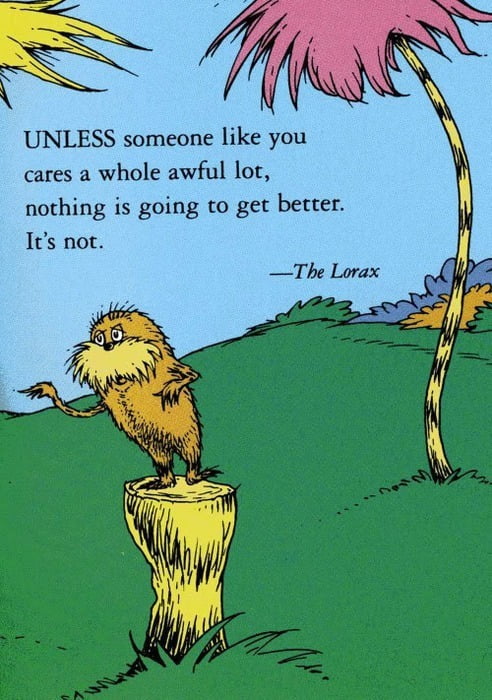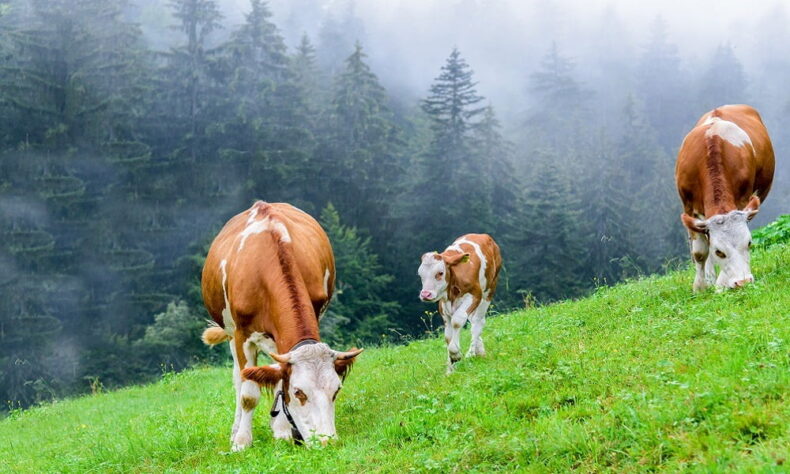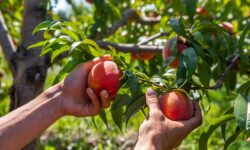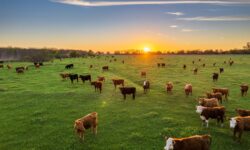Extreme weather throughout the year will cause a shortage of stone fruit in BC: We…
Forests are one of the key ways we can offset global greenhouse gas emissions, as identified in international climate change mitigation planning (1). This is due to their ability to effectively sequester (soak up) carbon from the atmosphere (2). Trees do this by pulling carbon from the air and transferring it to the soil through their roots (3). Although forests hold this environmental superpower, they are increasingly under threat of destruction by the expansion of agriculture. Agriculture is the leading cause of deforestation worldwide (4). One type of farming though, known as agroforestry, offers an alternative to this damaging aspect of our food system. This week we are exploring what agroforestry is all about.
What is agroforestry?
Instead of clear cutting to make room for food production, agroforestry integrates trees into agriculture to create sustainable land-use systems (5). Agroforestry benefits farms by the natural services trees provide. To explain what some of these services are, let’s explore three different types of agroforestry:
1. Riparian buffers
This practice is when trees are planted alongside water bodies, such as on the banks of rivers or lakes. Trees planted in this way can filter the water from pollutants and they can also stabilize the streambanks from erosion (6). Since many farmers irrigate their fields from local water sources, this natural service is a huge benefit to farmers and their crops.
2. Windbreaks
Some agricultural areas that experience high winds use this technique. Trees are planted in a row to “form barriers to reduce wind speed” (7). Windbreaks are used on farms that grow crops to reduce erosion and increase yields, but also on farms that raise livestock to protect animals from stress and mortality.
3. Silvopasture
This ancient practice integrates trees into pastures that are used to raise livestock (8). Research on silvopasture suggest that this method “far outpaces any grassland technique for counteracting the methane emissions of livestock and sequestering carbon under-hoof” (9).
This list of different types of agroforestry doesn’t even begin to exemplify all the amazing things that trees can do for our environment and our food system. In addition to the amazing natural services that trees provide, they also are an amazing climate change mitigation strategy because they require little care to maintain, are affordable to adopt, and they are regenerative!
What can you do?
- 1. Reach out to your local food producers: If you have a favourite farm that you buy your produce or meat from, reach out to them to ask how they manage their fields. You may be surprised by who practices agroforestry and how others practice sustainability in a different way.
- 2. Plant a tree! This is an easy way to turn your values into action.
- 3. In the words of Dr. Suess’s The Lorax: “…speak for the trees for the trees have no tongues.” You can do this by exploring ways you can protect forests. Try contacting your local government to see how our local forests are being managed or you could connect with conservationist groups and support their cause!

Sources
- 1. Canadell, Josep G., and Michael R. Raupach. “Managing forests for climate change mitigation.” science 320.5882 (2008): 1456-1457.
- 2. Jandl, Robert, et al. “How strongly can forest management influence soil carbon sequestration?.” Geoderma 137.3-4 (2007): 253-268.
- 3. Montagnini, Florencia, and P. K. R. Nair. “Carbon sequestration: an underexploited environmental benefit of agroforestry systems.” New vistas in agroforestry. Springer, Dordrecht, 2004. 281-295.
- 4. Chakravarty, Sumit, et al. “Deforestation: causes, effects and control strategies.” Global perspectives on sustainable forest management. IntechOpen, 2012.
- 5. Schoeneberger, Michele M. “Agroforestry: working trees for sequestering carbon on agricultural lands.” Agroforestry systems 75.1 (2009): 27-37.
- 6. Ibid.
- 7. Ibid.
- 8. Ibid.
- 9. “Silvopasture.” Project Drawdown. https://www.drawdown.org/solutions/food/silvopasture




